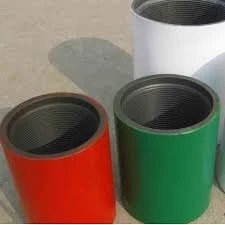- Afrikaans
- Albanian
- Amharic
- Arabic
- Armenian
- Azerbaijani
- Basque
- Belarusian
- Bengali
- Bosnian
- Bulgarian
- Catalan
- Cebuano
- Corsican
- Croatian
- Czech
- Danish
- Dutch
- English
- Esperanto
- Estonian
- Finnish
- French
- Frisian
- Galician
- Georgian
- German
- Greek
- Gujarati
- Haitian Creole
- hausa
- hawaiian
- Hebrew
- Hindi
- Miao
- Hungarian
- Icelandic
- igbo
- Indonesian
- irish
- Italian
- Japanese
- Javanese
- Kannada
- kazakh
- Khmer
- Rwandese
- Korean
- Kurdish
- Kyrgyz
- Lao
- Latin
- Latvian
- Lithuanian
- Luxembourgish
- Macedonian
- Malgashi
- Malay
- Malayalam
- Maltese
- Maori
- Marathi
- Mongolian
- Myanmar
- Nepali
- Norwegian
- Norwegian
- Occitan
- Pashto
- Persian
- Polish
- Portuguese
- Punjabi
- Romanian
- Russian
- Samoan
- Scottish Gaelic
- Serbian
- Sesotho
- Shona
- Sindhi
- Sinhala
- Slovak
- Slovenian
- Somali
- Spanish
- Sundanese
- Swahili
- Swedish
- Tagalog
- Tajik
- Tamil
- Tatar
- Telugu
- Thai
- Turkish
- Turkmen
- Ukrainian
- Urdu
- Uighur
- Uzbek
- Vietnamese
- Welsh
- Bantu
- Yiddish
- Yoruba
- Zulu
api tubing and casing chart
Understanding API Tubing and Casing A Comprehensive Overview
In the oil and gas industry, the extraction of hydrocarbons from the earth's subsurface requires the use of specific equipment and materials, particularly when it comes to well construction. Among these, tubing and casing are crucial components that ensure the safety, efficiency, and integrity of wellbores. The American Petroleum Institute (API) provides standardized specifications for these materials, which are critical for uniformity and safety across the industry.
What is API Tubing and Casing?
API tubing refers to the steel pipes that are used to transport the produced hydrocarbons from the well to the surface. It is designed to withstand high pressure and corrosive environments, ensuring that oil and gas can be safely transported. Tubing is typically installed inside the casing, which is a larger pipe that provides structure and support to the wellbore. Casing serves several purposes, including protecting groundwater, stabilizing the well, and providing a path for the tubing.
Casing is categorized into several types, each defined by its strength and usage. The most common types are surface casing, intermediate casing, and production casing. Each type serves a different function and is installed at various depths during the drilling process.
API Specifications
The API specifications for tubing and casing are crucial to ensure the integrity of drilling operations. These specifications include guidelines on dimensions, mechanical properties, and performance requirements. Understanding these specifications is essential for engineers and operators involved in the drilling process.
API tubing is classified based on its size, weight, and material properties. For instance, API Grades include H40, J55, K55, and P110, each signifying different levels of yield strength and tensile strength. The choice of tubing grade depends on the specific well conditions, including the depth and nature of the hydrocarbons being extracted. Higher grades are used in deeper wells or in wells with harsher conditions.
api tubing and casing chart

Benefits of Using API Standards
Using API standards in the selection and installation of tubing and casing offers numerous advantages. First, it ensures safety, as these standards have been developed through years of research and practical experience in the field. Adhering to these specifications minimizes the risk of failures during drilling operations, which can lead to costly accidents and environmental hazards.
Second, API standards facilitate communication and interchangeability between manufacturers and operators. When everyone adheres to the same standards, it improves compatibility and streamlines the supply chain, which is vital in the fast-paced oil and gas industry. This results in reduced downtime and lower costs.
Challenges in Tubing and Casing Operations
Despite the comprehensive guidelines provided by the API, challenges still exist in tubing and casing operations. One of the common issues faced by operators is corrosion, particularly in environments where hydrogen sulfide (H2S) or carbon dioxide (CO2) is present. Implementing preventive measures, such as the use of corrosion-resistant alloys or specialized coatings, is critical.
Another challenge is the risk of deformation during installation, which can compromise the integrity of the well. Operators must take great care in the selecting and handling of tubing and casing to avoid these issues.
Conclusion
In conclusion, API tubing and casing play a vital role in the oil and gas extraction process. Understanding the specifications and standards set by the API is essential for ensuring safe and efficient operations. While challenges exist, proper planning and adherence to these standards can mitigate risks and enhance the overall success of drilling operations. Ultimately, the use of quality tubing and casing is not just a matter of compliance, but a crucial factor in achieving sustainable and responsible resource extraction.
-
Tubing Pup Joints: Essential Components for Oil and Gas OperationsNewsJul.10,2025
-
Pup Joints: Essential Components for Reliable Drilling OperationsNewsJul.10,2025
-
Pipe Couplings: Connecting Your World EfficientlyNewsJul.10,2025
-
Mastering Oilfield Operations with Quality Tubing and CasingNewsJul.10,2025
-
High-Quality Casing Couplings for Every NeedNewsJul.10,2025
-
Boost Your Drilling Efficiency with Premium Crossover Tools & Seating NipplesNewsJul.10,2025







